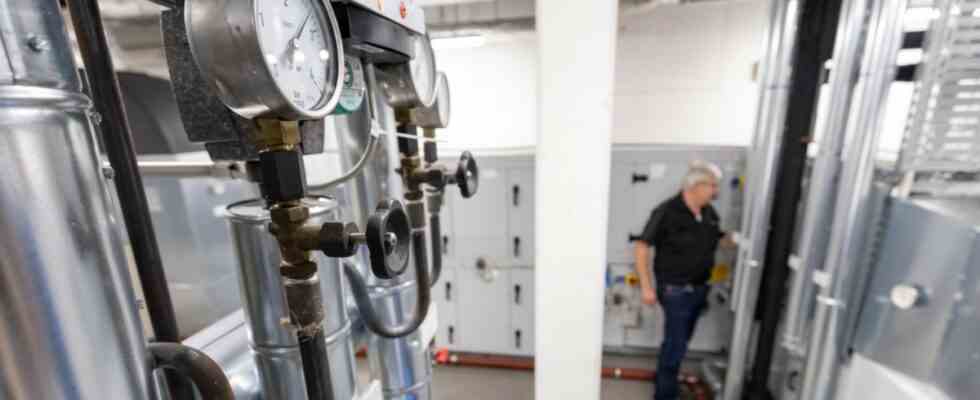In the Neues Museum in Nuremberg it is pleasantly cool on hot summer days, even if it is not quite as refreshing as it used to be. Due to rising energy costs, the Museum of Art and Design has reduced the air conditioning by three degrees to 23 degrees. Director Simone Schimpf had to renegotiate the contracts for all items on loan in the temporary exhibition. Normally 20 degrees are prescribed as standard. “We will have to agree on something new in the museum world as a whole,” she says.
Many other houses in Bavaria are also looking for ways to save energy. Because the summers are getting hotter, and the costs for air conditioning or lighting are rising sharply, as is the case for heating in winter. “These additional costs must be factored into the economic plans as best as possible and of course compensated for by savings in other areas,” says Sven Friedrich, director of the Richard Wagner Museum in Bayreuth. As a result, there is less money for the actual museum work, which means that the attractiveness of the houses suffers.
According to the Association of Museums in Bavaria, this will hit small houses hard. They were already working to the limit to meet insurance and rental requirements. Friedrich considers higher admission prices to be counterproductive. This would further reduce visitor numbers. Instead, the museum wants to reduce energy consumption with a climate concept and, for example, switch the air conditioning to recirculation at night, light less inside and outside and maybe show fewer exhibitions.
The exhibition rooms in the Städtische Galerie im Lenbachhaus in Munich have been illuminated with economical LED technology since the general renovation in 2013. The fountains in the garden are switched off at 6 p.m. And the hot water boilers in the offices are no longer in operation, says Managing Director Hans-Peter Schuster.
Humidity also depends on temperature
Photographs, modern materials and video works react very sensitively to temperature changes, according to the Bavarian State Painting Collections, which have branches throughout Bavaria in addition to the Pinakotheken in Munich. Almost more important: the relative humidity. That even has priority over the temperature, explains a spokeswoman. Works with sensitive organic materials such as wood panel paintings react to fluctuations in humidity, which in turn is indirectly dependent on temperature. In the art collections and museums in Augsburg, too, the focus is on the right climate. Iron objects, for example, could corrode if it is too humid, and paintings need higher humidity, says spokeswoman Monika Harrer-Jalsovec.
But which measures bring what? The Neues Museum in Nuremberg is trying to find out. The fire protection doors on the facade are currently closed because it is significantly warmer in the rooms there. “It doesn’t look so nice, but it saves money,” says Schimpf. The skylights in the roof are also closed. On some of them, the museum is also testing a film that lets less sunlight through and isolates at the same time. Whether that helps will be shown in the consumption figures after the summer, says the museum director.
In the Germanisches Nationalmuseum there is clay plaster on the walls in the medieval hall and the permanent exhibition for the history of crafts and medicine, which insulates and regulates the humidity. “As a result, we don’t need air conditioning and humidifiers,” says spokeswoman Sonja Missfeldt. And the new underground depot, into which around 60,000 cultural treasures are to move from 2023, stands on the two lower levels in the groundwater and is thus cooled. “Air conditioning is available for emergencies, but is not normally needed,” says Missfeldt. In addition, Germany’s largest cultural history museum is examining the installation of motion detectors for the light.
Despite the heat, you can also relax in the central depot of the city archeology in Augsburg. It was opened in 2017 as the most modern depot in Bavaria, explains Harrer-Jalsovec. “Thanks to intelligent building technology and very good insulation, no air conditioning is required for cooling.” And when the summer is over? The German National Museum fears that the cost of heating will probably be significantly higher. In the museum rooms it is always around 20 degrees, in the offices the heating should be reduced by two to three degrees if possible. The Lenbachhaus wants to keep it similar. The city of Munich requires a room temperature of no more than 19 degrees from its facilities. That will be implemented, says managing director Schuster, taking into account the stable climate values necessary for art.

